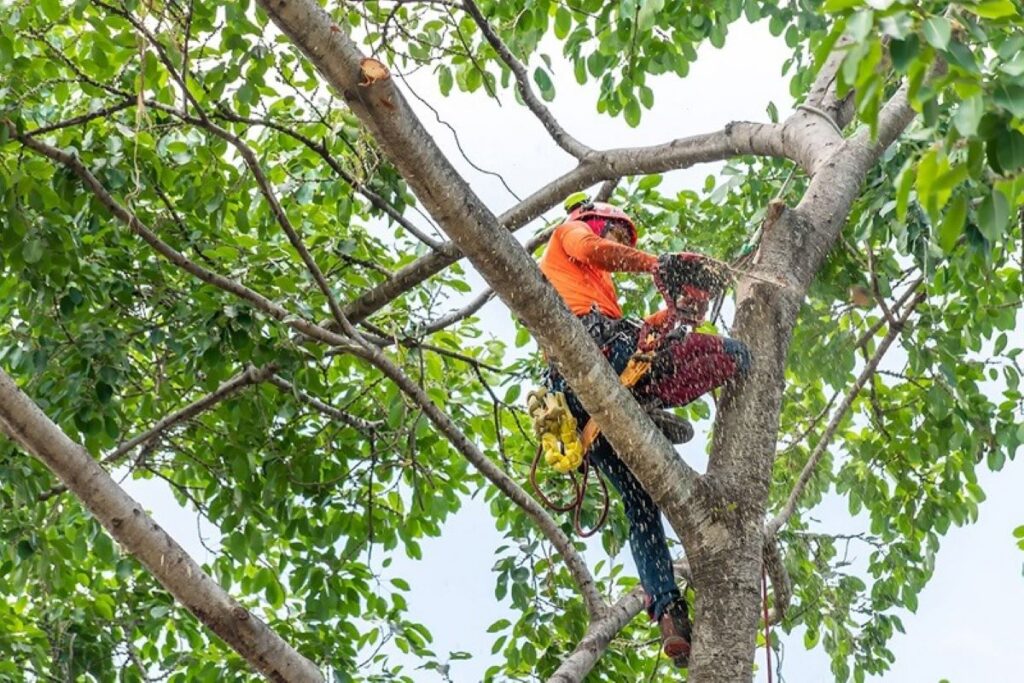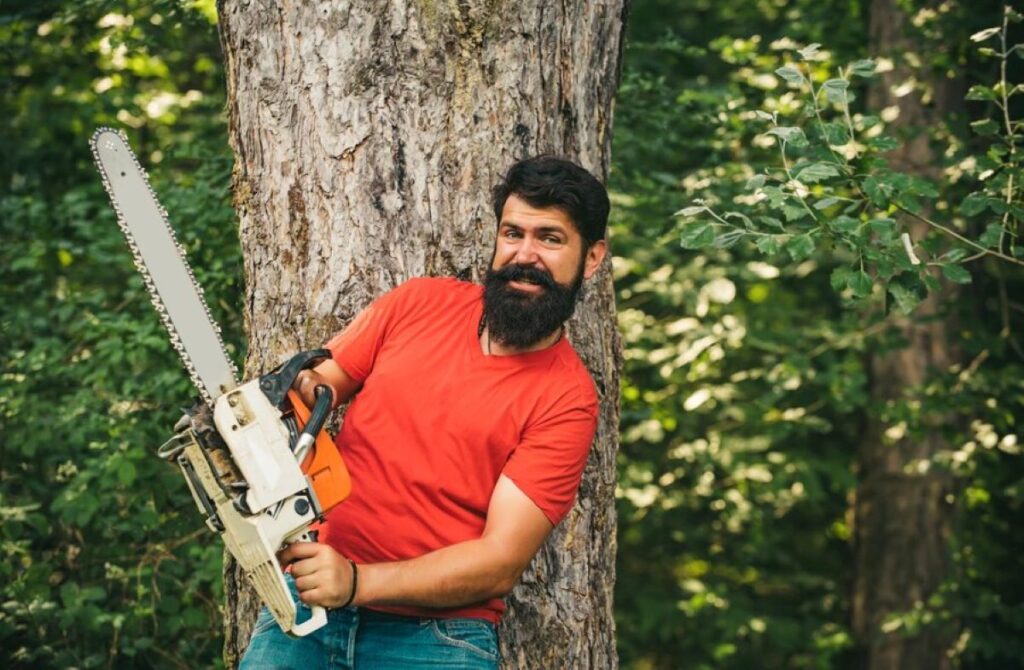Why Is It Important to Protect Trees from Wind and Salt Exposure Near the Coast?
Coastal trees face relentless assault from two primary forces: powerful winds that can physically damage branches and accelerate water loss, and salt-laden air that burns foliage and compromises structural integrity. Without proper protection strategies, even mature trees struggle to survive in these harsh conditions.
Understanding Environmental Stresses
Understanding these environmental stresses is essential for maintaining healthy coastal landscapes in areas like Mosman. Here’s how wind and salt affect trees:
- Salt Damage: Salt crystals accumulate on leaf surfaces, disrupting photosynthesis and causing tissue damage.
- Wind Stress: Constant wind exposure forces trees to divert energy from growth to simply staying upright.
Trees lacking adaptation to these conditions often develop stunted growth, brown foliage, and weakened root systems.
The Good News
The good news? Effective protection methods can dramatically improve survival rates for coastal trees. Through careful species selection, strategic planting techniques, and ongoing maintenance, an arborist Mosman can help establish thriving green spaces that withstand wind and salt exposure.
What Are the Main Challenges Trees Face Near Coastal Areas?
Coastal trees battle two primary environmental stressors that work together to compromise their health and structural integrity.
1. Wind Damage
Wind damage to trees includes broken branches and uprooted trees during storms, as well as ongoing problems like stunted growth and uneven canopy development caused by strong prevailing winds.
The mechanical stress from constant wind movement forces trees to use a lot of energy to stay stable. This continuous shaking increases transpiration rates, causing excessive water loss through leaves even when soil moisture is sufficient. As a result, trees develop a distinctive windswept appearance as they struggle to maintain their natural shape.
2. Salt Spray Effects
Salt spray effects are equally harmful to coastal vegetation. Salt-laden air deposits sodium chloride on leaf surfaces, burning foliage and causing premature leaf drop. The salt enters through tiny openings on the leaves (stomata), disrupting the tree’s ability to control water and nutrient absorption.
This buildup of salt in plant tissues interferes with photosynthesis and weakens cell walls, making trees more vulnerable to diseases and pest infestations.
The challenges faced by coastal trees become even more severe when both wind damage and salt spray effects occur together. This creates an unfavourable environment where only specially adapted species can survive.
Which Tree Species Are Best Suited for Coastal Wind and Salt Exposure?
Not all trees can tolerate the harsh conditions found in coastal environments. Species selection forms the foundation of successful coastal tree establishment, determining whether your trees will thrive or struggle against salt spray and persistent winds.
Salt-tolerant trees Mosman residents should consider include:
- Banksia integrifolia – naturally adapted to coastal conditions with excellent salt resistance
- Eucalyptus leucoxylon – hardy Australian native that withstands both wind and saline air
- Syzygium australe (Brush Cherry) – dense foliage provides natural wind protection whilst tolerating salt
- Agonis flexuosa (Willow Myrtle) – flexible branches bend rather than break in strong winds
- Olea europaea (Olive) – Mediterranean heritage makes it ideal for coastal climates
Wind-resistant coastal species like Cupressus leylandii ‘Better Green’ and Laurus nobilis ‘Miles Choice’ offer structural strength through flexible trunks and deep root systems. These best coastal trees have evolved mechanisms to shed salt from their leaves and maintain water balance despite constant wind exposure.
How Can Planting Location Help Protect Trees from Coastal Winds?
Strategic tree placement in coastal areas can dramatically reduce wind damage and improve survival rates. The right location acts as the first line of defence against harsh coastal conditions.
Natural shelter provides the most effective protection. Position trees behind existing structures, buildings, or established vegetation that can block prevailing winds. North-facing slopes in Mosman typically receive less direct wind exposure than exposed headlands or clifftops.
Creating windbreaks on Mosman properties involves establishing protective barriers upwind of vulnerable trees. These can include:
- Dense hedgerows planted perpendicular to prevailing winds
- Solid fencing or walls positioned 2-3 metres from young trees
- Mature tree lines that filter wind before it reaches newer plantings
The ideal sheltered planting location for coastal trees sits 5-10 times the height of the windbreak away from the barrier. This distance creates a protected zone where wind speed drops by up to 50%, giving trees the breathing space they need to establish strong root systems without constant battering.

What Temporary Measures Help Young Trees Establish Near the Coast?
Young trees are particularly vulnerable during their first two years in coastal areas. This is when their shallow root systems are not yet strong enough to hold them steady against strong winds. During this crucial period, temporary windbreaks are necessary for young trees. These windbreaks serve as important barriers against both physical harm and excessive water loss.
1. Garden Mesh: A Shield for Seedlings
Garden mesh offers an effective solution for protecting seedlings in coastal areas that experience harsh conditions. Here’s how to use it:
- Install stakes around the perimeter of young trees.
- Wrap the mesh at a distance of 30-50cm from the trunk, creating a protective cylinder.
- Ensure that the mesh filters wind while still allowing light to penetrate.
- Make sure the mesh extends at least 30cm above the tree’s current height.
2. Burlap Screens: Protecting Against Salt Spray
Burlap screens provide similar protection with an added benefit of intercepting salt spray before it reaches delicate leaves. Follow these steps to set up burlap screens:
- Secure burlap to wooden frames positioned on the side of saplings facing the wind.
- Ensure that the material remains taut to prevent flapping which could damage branches.
These temporary structures usually stay in place for 18-24 months, gradually removed as root systems grow strong enough to handle coastal conditions on their own.
How Should Soil Be Prepared for Coastal Tree Planting?
Sandy coastal soils drain rapidly and struggle to retain essential nutrients, creating hostile conditions for newly planted trees. These free-draining substrates leave roots vulnerable to desiccation whilst offering minimal nutritional support during the critical establishment phase.
Soil preparation coastal planting requires substantial organic matter incorporation before planting. Work compost, well-rotted manure, or aged leaf mould into the planting hole and surrounding area to a depth of 30-40 centimetres. This amendment transforms sandy substrates by:
- Creating sponge-like structures that hold moisture longer
- Binding nutrients that would otherwise leach away
- Encouraging beneficial microbial activity
- Improving soil structure for easier root penetration
Improving sandy soil nutrients demands ongoing attention beyond initial planting. Apply a 5-centimetre layer of organic mulch annually, which gradually breaks down and continues enriching the root zone. Consider mixing in biochar or clay particles to further enhance water and nutrient retention in particularly challenging coastal locations.
Why Is Proper Watering Critical for Coastal Trees During Establishment?
Watering coastal trees Mosman requires a strategic approach that addresses both establishment needs and salt stress mitigation. Newly planted trees near the coast face dual challenges: they must develop robust root systems whilst simultaneously coping with salt-laden conditions that increase water loss through damaged foliage.
Irrigation young trees salt exposure demands consistency during the critical first two years. Deep, infrequent watering encourages roots to grow downward rather than spreading superficially, creating a stronger anchor against coastal winds. Apply water slowly to allow soil penetration, aiming for 10-15 litres per session for medium-sized trees.
Salt accumulation in leaf tissue intensifies dehydration, making adequate hydration essential for survival. Water also helps flush excess salts from the root zone, preventing toxic build-up that can stunt growth. Early morning watering proves most effective, allowing foliage to dry before nightfall whilst minimising evaporation losses.
Arborist Mosman how to protect trees from wind and salt exposure near the coast guidance emphasises monitoring soil moisture levels rather than following rigid schedules, as sandy coastal soils drain rapidly.
How Does Mulching Support Tree Health in Coastal Environments?
Mulching benefits coastal trees by creating a protective layer that shields root systems from multiple environmental stressors. A 75-100mm layer of organic mulch spread around the tree base (keeping it 100mm away from the trunk) significantly improves moisture retention in coastal conditions, preventing rapid soil drying caused by salt-laden winds.
The protective barrier works in several ways:
- Moisture conservation: Reduces evaporation rates by up to 70%, keeping roots hydrated between watering sessions. This is particularly beneficial as organic garden mulches conserve moisture, preventing rapid soil drying.
- Temperature regulation: Insulates soil from extreme heat, preventing root stress during hot coastal days
- Salt interception: Acts as a buffer zone that prevents salt spray from directly contacting soil and roots
- Wind protection: Anchors sandy soil particles, reducing erosion around the root zone
Organic materials like wood chips, bark, or leaf litter break down gradually, enriching coastal soils with nutrients whilst maintaining their protective function. These organic mulching materials not only serve a dual purpose of enhancing soil fertility but also support the health of woody ornamentals in harsh seaside locations. This dual benefit makes mulching one of the most cost-effective strategies for establishing healthy trees in such environments.
What Role Does Pruning Play in Protecting Trees From Wind Damage?
Pruning coastal trees Mosman creates stronger, more resilient structures capable of withstanding powerful ocean winds. Strategic removal of damaged, diseased, or weak branches reduces the risk of breakage during storms and prevents these vulnerable sections from becoming entry points for salt damage.
Incorporating wind-resistant tree shaping, which focuses on developing a balanced canopy that allows air to flow through rather than against the tree, is essential. Thinning dense crowns reduces wind resistance by up to 40%, whilst maintaining the tree’s natural form. This technique proves particularly effective for coastal specimens exposed to persistent prevailing winds.
Key pruning practices include:
- Removing crossing branches that create weak attachment points
- Shortening overly long limbs that act as wind sails
- Creating an open canopy structure that reduces wind load
- Eliminating dead wood that becomes projectiles in high winds
Timing matters significantly—prune during dormant seasons to minimise stress and avoid creating fresh wounds when salt spray is most intense. Young trees benefit from formative pruning that establishes strong branch architecture early, whilst mature specimens require maintenance pruning every 2-3 years to sustain their wind-resistant shape.
Moreover, understanding the biomechanics of trees can further enhance the effectiveness of these pruning strategies.
How Can Coastal Forests or Shelterbelts Provide Long-Term Protection?
Establishing shelterbelts along the Mosman coast creates a living defence system that shields vulnerable vegetation from harsh marine conditions. These strategic plantings of multiple tree rows work as permanent barriers, fundamentally altering the microclimate for everything growing behind them.
Coastal shelterbelts benefits extend far beyond individual tree protection. A properly designed shelterbelt can reduce wind speeds by up to 50% for distances extending 10 to 20 times the height of the trees. This dramatic reduction in wind velocity creates calmer conditions where less hardy species can thrive.
Salt spray interception represents another critical function of wind buffers Mosman coast properties rely upon. The outer rows of salt-tolerant species like Banksia integrifolia or Eucalyptus leucoxylon absorb the brunt of salt-laden air, preventing it from reaching more sensitive plants inland. This filtration effect creates graduated zones of protection, allowing for diverse plantings across your property.
The layered structure of shelterbelts—combining tall trees, medium shrubs, and low groundcovers—provides maximum wind resistance whilst maintaining ecological value for local wildlife.

How Can an Arborist in Mosman Help Protect Your Coastal Trees?
Professional arborist Mosman services provide expert assessment and customised solutions for protecting trees against coastal wind and salt damage. An experienced tree protection coast expert help ensures your trees receive the right care from the start.
Qualified arborists bring specialised knowledge that proves invaluable when dealing with coastal challenges. They can identify which species will thrive in your specific microclimate and soil conditions, saving you from costly mistakes.
Species Selection and Site Assessment
An arborist evaluates your property’s exposure levels, soil quality, and existing vegetation to recommend the most suitable salt-tolerant species. They understand local conditions in Mosman and can suggest trees that will flourish rather than merely survive.
Professional Planting and Establishment
Proper planting depth, root preparation, and initial staking require technical expertise. Arborists ensure young trees have the best possible start, implementing temporary protection measures at critical growth stages.
Ongoing Maintenance Programmes
Regular health assessments, strategic pruning for wind resistance, and soil management form part of comprehensive tree care. Professional monitoring catches problems early, preventing minor issues from becoming major threats.
Arborist Mosman how to protect trees from wind and salt exposure near the coast requires understanding both horticultural science and local environmental conditions. Consulting a qualified local arborist gives your coastal trees the expert support they need to establish strong, healthy growth patterns that withstand harsh marine conditions for decades to come.
Related : What Happens During a Professional Tree Removal Assessment in Cheltenham
FAQs: Protecting Coastal Trees from Wind and Salt Exposure in Mosman
Coastal trees face strong winds and salt-laden air that damage foliage, stunt growth, and weaken roots. Without protection, even mature trees struggle to survive.
2. How do wind and salt affect trees?
Wind: Causes broken branches, uprooting, stunted growth, and increased water loss.
Salt: Deposits on leaves, burns foliage, disrupts photosynthesis, and weakens structural integrity.
3. Which tree species are best for coastal areas?
Salt- and wind-tolerant species include:
Banksia integrifolia
Eucalyptus leucoxylon
Syzygium australe (Brush Cherry)
Agonis flexuosa (Willow Myrtle)
Olea europaea (Olive)
4. How does planting location help?
Strategic placement behind natural shelters, structures, or windbreaks reduces exposure to prevailing winds and salt spray. Optimal distance from barriers is 5–10 times the windbreak height.
5. What temporary measures help young trees?
Garden mesh: Protects seedlings from wind while allowing light through.
Burlap screens: Shield saplings from salt spray. Typically used for 18–24 months until roots establish.
6. How should soil be prepared for coastal planting?
Incorporate organic matter like compost or well-rotted manure into sandy soils to improve moisture retention, nutrient availability, and root growth. Mulch annually to maintain soil fertility and moisture.
7. Why is proper watering critical?
Deep, infrequent watering encourages strong root systems and flushes salts from the soil. Early morning irrigation helps minimize evaporation and foliage damage.
8. How does mulching support coastal tree health?
Mulch conserves moisture, regulates soil temperature, intercepts salt, and protects roots from erosion while gradually enriching the soil.
9. What role does pruning play?
Pruning creates stronger, wind-resistant tree structures, removes damaged or weak branches, and thins dense canopies to reduce wind load. Formative pruning for young trees and maintenance pruning for mature specimens are essential.
10. How do shelterbelts protect coastal trees?
Multiple rows of trees and shrubs act as wind buffers, reducing wind speed by up to 50% and intercepting salt spray. This layered planting supports less hardy species and maintains ecological value.
11. How can an arborist help?
A professional arborist:
Selects suitable salt- and wind-tolerant species
Assesses site conditions and exposure
Implements proper planting techniques
Provides ongoing maintenance, pruning, and soil management
12. What are the long-term benefits of professional coastal tree care?
Proper protection ensures trees establish strong roots, withstand harsh conditions, reduce maintenance costs, and maintain a healthy, attractive coastal landscape for decades.



